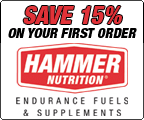People would not consider
me a barefoot runner. I am an ultramarathon trail runner. It’s what I do and who I am. Mountains call to me, mystify me, and consume me. If I denied the addiction I would be lying. Running barefoot in the Wasatch Mountains for 20, 50, or 100 miles is not practical though.
Barefoot Ted would be disappointed because it is possible, just not practical…but hear me out. My approach and style does mirror barefoot running rhetoric. So how could trail runners, ultra runners, and just about any runner effectively incorporate barefoot rhetoric into their running? Read on and find out.
The basis for barefoot running is that it encourages natural and efficient biomechanics, proprioception in the feet, a quick and light running style, and strengthens your feet, all while keeping you running healthier, happier, and faster! Who doesn’t want all those things? Yet the Wasatch Mountains present some problems. They are ridiculously rocky, steep, and gnarly. The lower trails have more thorns then ants and the upper trails are closer to boulder fields then an actual trail. As a competitive trail runner I need the ability to crank out serious miles at fast speeds while keeping my feet from getting pulverized into mincemeat. Even the
Tarahumara wear leather sandals on the relatively mild Leadville 100 (I assure you that the Wasatch 100 course has substantially tougher terrain and much worse footing!). So what are my options?
I start with my recovery runs. I’ll run barefoot for 2 or usually 3 miles, mostly on grass, on my easy days. These runs are at a very slow pace giving my body a chance to recover while incorporating the benefits of running barefoot. It’s a great way to begin the process of strengthening your feet, plus it always feels so good to kick off those shoes and do a few laps around the park (read and incorporate the article “Transitioning to Barefoot Running” before going this far).
Vibram Five Fingers are currently the best option for minimal protection footwear. I’ll go up to 5 or 6 miles around town, foothill trails, or dirt roads with these. They are a great way to prevent thorns and jagged rocks from tearing up your feet. I know people who run farther in these but either my feet aren’t yet strong enough or I just need a little more protection on longer runs.
Most people’s light weight trainers and racing flats now become my max protection shoes. These shoes are light, flexible, and low profile…but I go even one step farther. In my mind there is absolutely no reason to add a chunky heel to a shoe. It only encourages you to heel strike which is poor biomechanics. So I take my shoe to the local shoemaker where he proceeds to unpeel the outsole, cut off 10mm of EVA, then glue the outsole back on (you can try this at home, but start with your least favorite shoe). I now have a shoe that has even proportions from heel to forefoot, is light, flexible, and closely resembles barefoot running. Now I’m ready to log 40, 60, or even 100 miles per week in the mountains running with barefoot like efficiency but modern day protection. I prefer trail shoes for this buying them ½ size larger then usual giving me lots of toe room and keeps me from jamming up on steep downhills. Favorites include the LaSportiva Fireblade, the Montrail Mountain Masochist, and the New Balance 100. Remember to axe those unnecessary chunky heels!
I’m not proposing that we each start running 200 miles per week but I do believe that each of us can become stronger, healthier, and happier runners by incorporating barefoot running strategies into our weekly and daily running routines. Having just successfully completed the Bear 100 in minimalistic footwear, I can attest to the benefits of running with more natural footwear. My biomechanics have adjusted, my injuries have dissipated, I recover quicker, and I am loving running more than ever.





